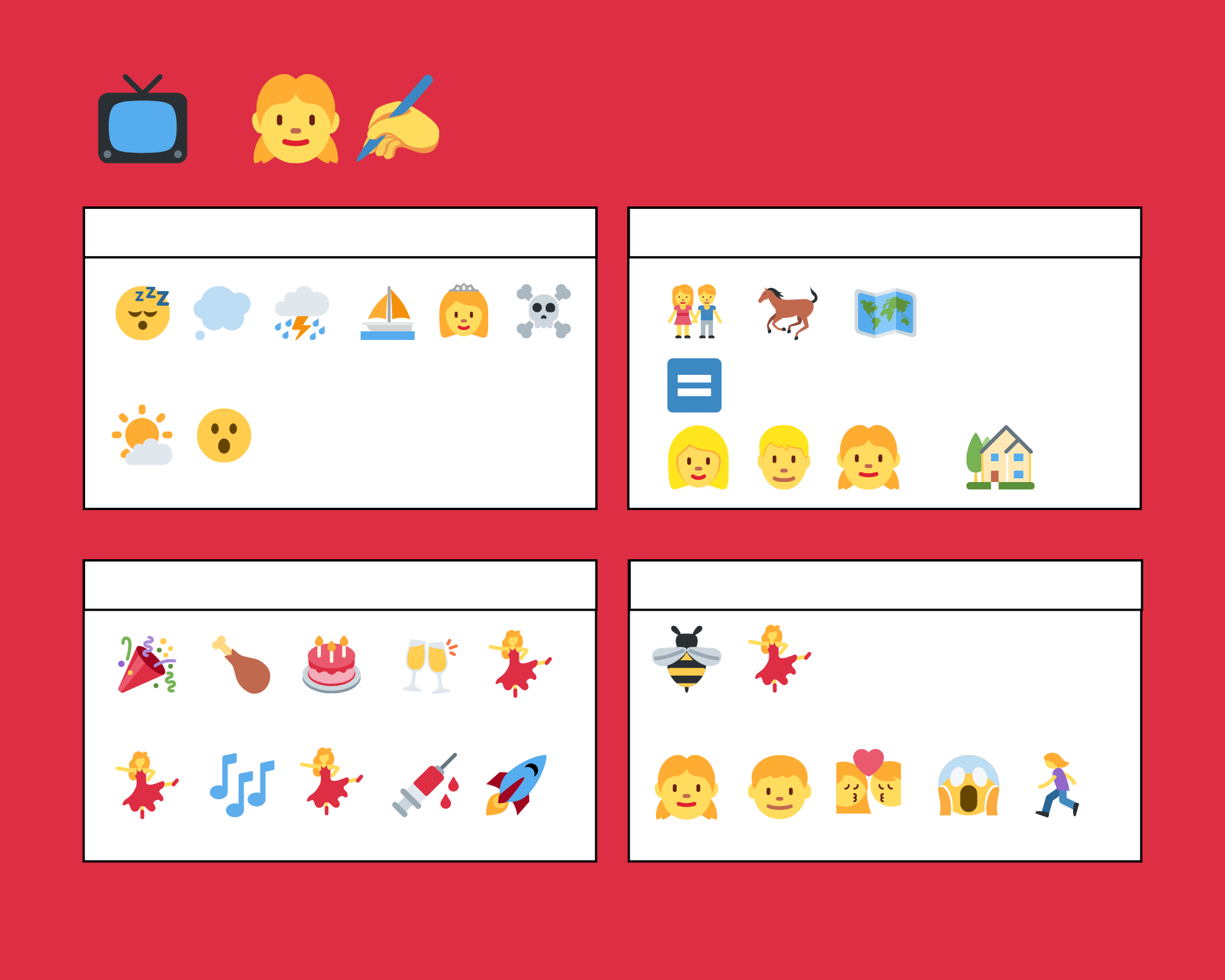
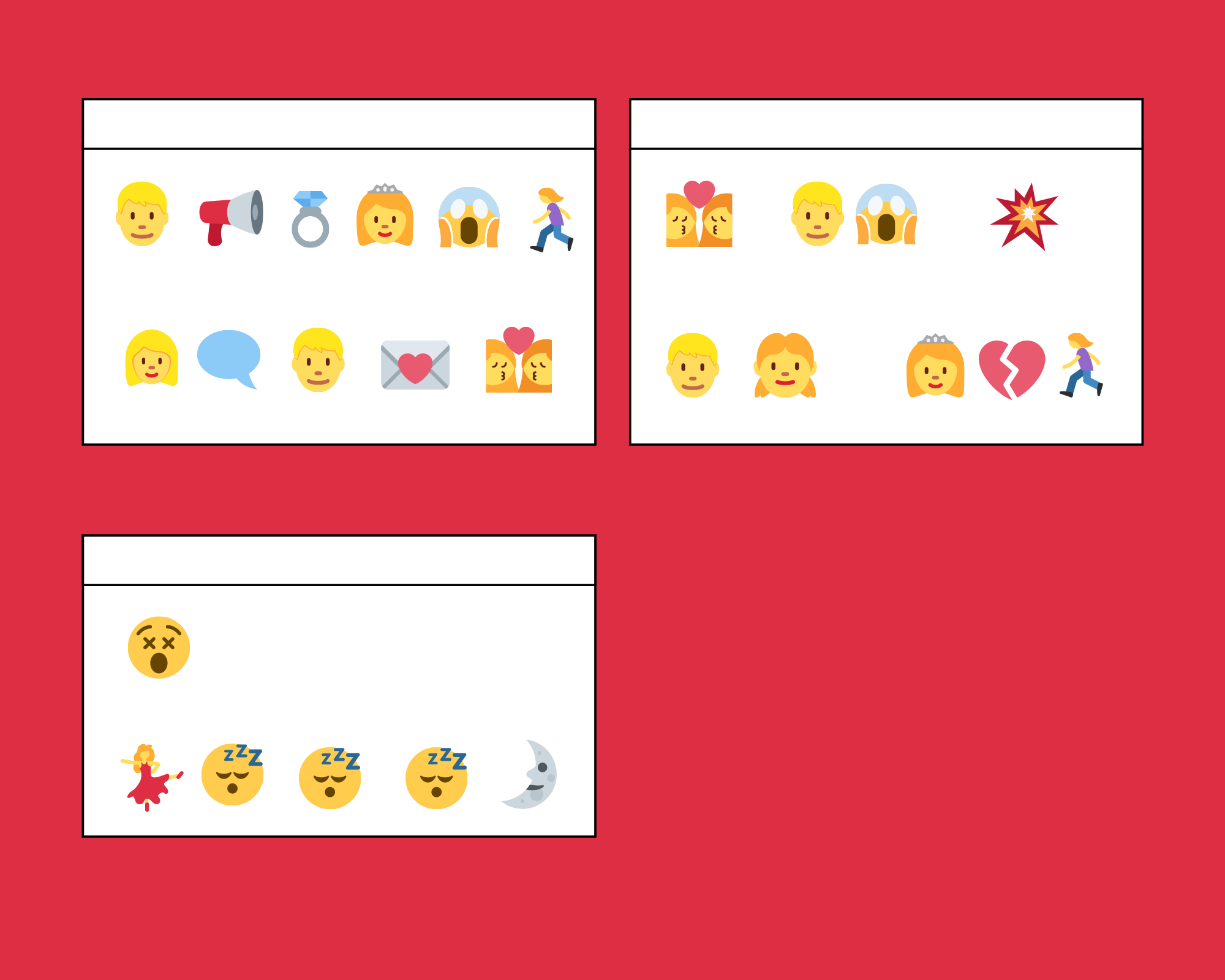
Media Choice and Structure
In this emoji story task, I used the medium of a storyboard to explore the visual mode of this ‘reverse ekphrasis’ experiment (Bolter, 2001; Kress, 2005). If we think about the structure of storyboards as media, they typically communicate ideas rather than trying to translate a script verbatim with dialogue or other text based media. The text on a storyboard usually indicates technical details like the shot size, angle, and camera movement along with any necessary sounds in a shot or scene, while the image is what is conveying the action and meaning of the shot or scene. The images above show my interpretation of an idea-based, scene-by-scene storyboard.
I used emojis to show the action in each scene where storyboard images would ordinarily be, and refrained from using any other text. I toyed with placing the emojis as they appeared in the scene, like a diagram, but some of the ideas weren’t clear that way and then I had no place for the characters’ thoughts and feelings. I decided to organize the emojis sequentially, as Kress describes when a story unfolds as a sequence of events, positioning them from left to right in each box like a display (Kress, 2005). As Kress (2005) noted about the book as media, the order is coded to assume normal reading from left to right. Kress describes this as fixed and potentially constraining for a reader but, like in his description of words, the emojis are very much open to interpretation by the reader and as he argues, less clear than words, maybe allowing for even more creative interpretations (Kress, 2005).
I began with the title and the representation of the main character. I felt that the work I chose was focused primarily on the characters and their lives so there are a lot of ‘people’ emojis that I tried to differentiate between. Once I chose the emojis for the main characters, I kept using those same emojis for those characters throughout the storyboard. I chose this work because I watched it recently and I thought that it would be easier to choose something I remembered clearly, but I still had to re-watch it in order to recall each scene accurately and decide on which emojis would be presented in each scene and in which order.
Challenges
Bolter (2001) mentions in chapter 4, that hypermedia designers use images to convey meaning more directly than words alone can do and connects this immediacy to our ‘desire for the natural sign.’ In using emojis alone, I didn’t feel at all like I was conveying meaning more naturally, directly or immediately. I wondered about this argument as I think, if we look at film production, there is a tendency for some writers and directors to be very expository. Leaving the meaning of a shot or scene for an audience to understand purely visually is difficult to do. We tend to want to compensate for any lost meaning or chance of misinterpretation by including some dialogue or voiceover work.
Bolter (2001) later adds more – that pictures mean too much and are too broad to be clearly understood, or are best used as identification and in specific situations rather than in stories told in time. I felt these considerations here as I tried to wrangle the denotative and connotative meanings in each scene into only tiny pictures (of limited variety!). I wanted to add text knowing that the emojis weren’t specific enough and weren’t able to be adequately organized by time.
In other words, I understood the significance of the emojis’ spatial relationship to one another, but couldn’t quite get them to ‘unfold’ in the storyboard space in a clear way (Kress, 2005). I also found it interesting when Bolter (2001) discusses the use of ASCII characters in the form of faces as writers trying to make something they’ve written interpretable only in one way rather than many. I wonder about that as emojis can now carry different culturally derived meanings. I actually had to search for a sequence of emojis that meant something specific in my storyboard for example, since that use of emojis wouldn’t be something I knew how to communicate or understand based on my own emoji use, for example.
References
Bolter, Jay David. (2001). Writing space: computers, hypertext, and the remediation of print. New York, NY: Routledge.
Kress (2005), Gains and losses: New forms of texts, knowledge, and learning. Computers and Composition, Vol. 2(1), 5-22.
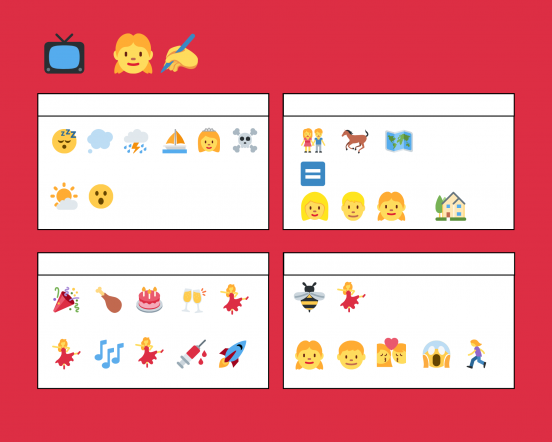
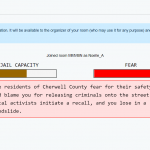

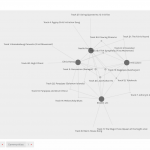

Nick Hall
November 28, 2021 — 11:16 am
This is a really interesting approach to the task. I like the storyboards a lot, and the way you present them makes them interesting to … maybe not “read,” but to see 🙂 My first thought when I saw TV + woman + writing was Sex and the City, but looking at the rest of the boards I’m pretty sure it wasn’t that.